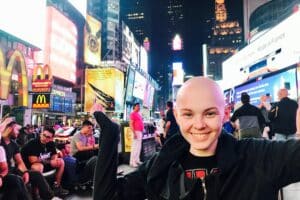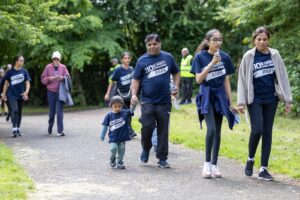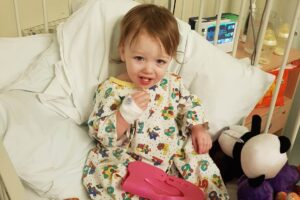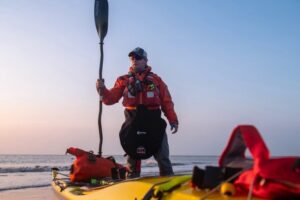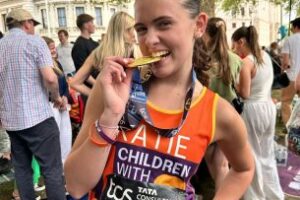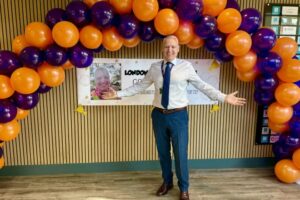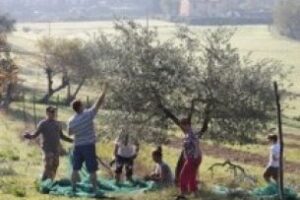Ava’s Retinoblastoma Story
Ava was diagnosed with retinoblastoma in November 2023 when she was just one year old. Her mum, Victoria, shares their story so far.
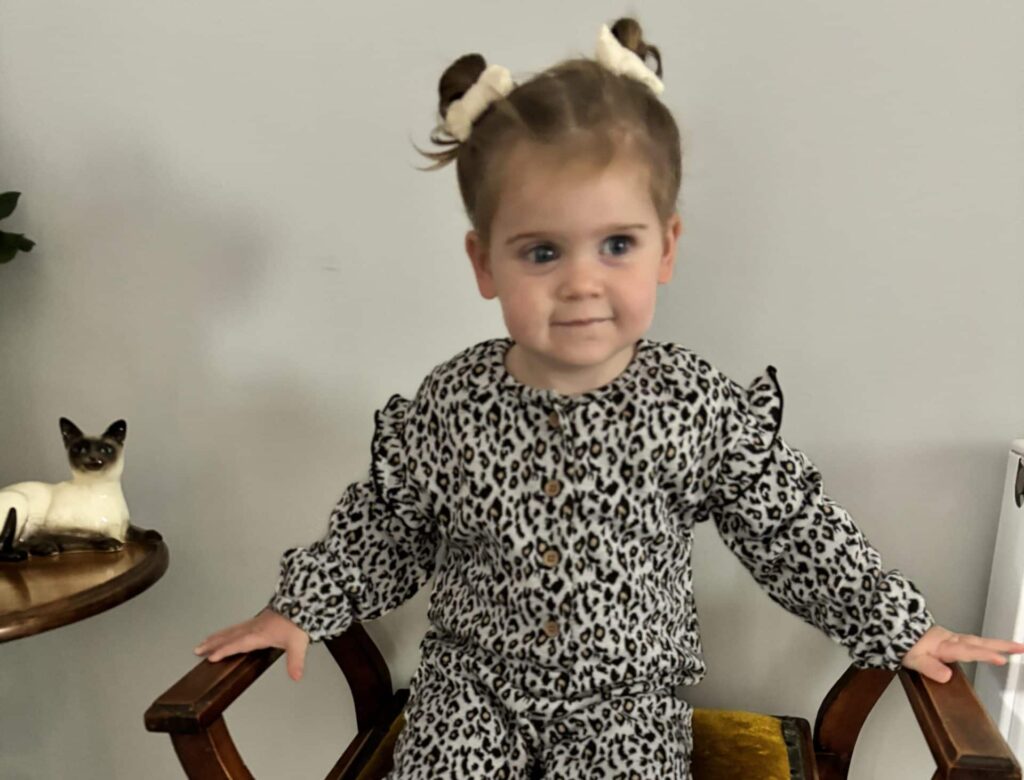
The start of Ava’s journey
On the morning of 23 October 2023, we noticed Ava had hand, foot and mouth (HFM). We weren’t worried as her older siblings had had it when they were younger and her symptoms seemed mild. However, by the afternoon we saw that her right eye looked slightly bigger, her iris had darkened, and her pupil wasn’t dilating properly. I called the doctor, who luckily saw her within the hour.
The doctor couldn’t see the back of her eye but didn’t seem overly concerned, explaining that HFM can cause unusual inflammation in the body. However, he wanted Ava checked over so we were admitted to hospital.

At the hospital
The hospital confirmed they couldn’t see the back of Ava’s eye and that she had no red eye reflex. They weren’t overly concerned and thought it might be related to HFM. As a precaution, they admitted Ava to the ward and made an emergency referral to the RACE clinic (Rapid Access Clinic for Eyes) for the next day.
Ava had a rough night with hourly observations so she wasn’t very cooperative with the ophthalmologist. They confirmed again that there was no red eye reflex, a white glow, and high eye pressure of 37, as well as a full retinal detachment. The doctor initially suspected glaucoma but wasn’t comfortable making a diagnosis as Ava wouldn’t stay still. We were told to return the next day to see a senior ophthalmologist. We went back to the ward for another sleepless night and hourly checks.

Devastating diagnosis
The next day, we met the senior ophthalmologist, who carried out an eye exam and an ultrasound scan on Ava’s eye. Then came the words every parent dreads – the large mass in her eyeball was a tumour called retinoblastoma, a type of eye cancer in children. Our hearts sank, and it felt as though the world had stopped.
The doctor explained that we would need to go to one of two specialist hospitals for an official diagnosis and treatment plan. From what he could see, it couldn’t be anything else. He then prepared us for the worst-case scenario – something that was incredibly hard to hear at the time, but in hindsight, we were grateful for, as it helped us prepare for the next stage.
Our hearts sank and it felt as though the world had stopped.

Blind in one eye since birth
The referral was made to our nearest children’s specialist hospital. They called the next day and booked an appointment for the following week. We travelled up the day before as Ava needed to be on the ward by 8am. She was scheduled for an EUA (eye examination under anaesthetic) so she was nil by mouth from 3am.
That morning, we headed to the ward where the team explained how the day would go. We then carried Ava to theatre and held her close as they placed the mask over her face to help her fall asleep. She was under for around 40 minutes.
The doctors told us they had found a large, forward-tilting tumour taking up most of her eye. These tumours are graded from ‘A’, the least aggressive, to ‘E’, the most aggressive. Sadly, Ava’s tumour was graded ‘E’. It measured 22mm and was very advanced. The doctor believed Ava had had it since birth and confirmed she was completely blind in that eye.
Treatment options
The doctors explained the treatment options and, after discussing Ava’s case with colleagues, decided that based on the size of the tumour and the fact she would never regain vision in that eye, the safest option was enucleation (full eye removal surgery).
Before surgery could go ahead, Ava needed an MRI to check whether the tumour had spread to the optic nerves. This was crucial, as if it had, she would need chemotherapy before surgery.
The following week, Ava had an appointment at the children’s hospital in Cardiff, where she underwent another general anaesthetic and was in theatre for about 45 minutes.
Two days later, we received the call to say they were happy with the results and chemotherapy wasn’t needed before surgery. They gave us the go-ahead to get married, and three days later we returned to the specialist hospital for the operation.
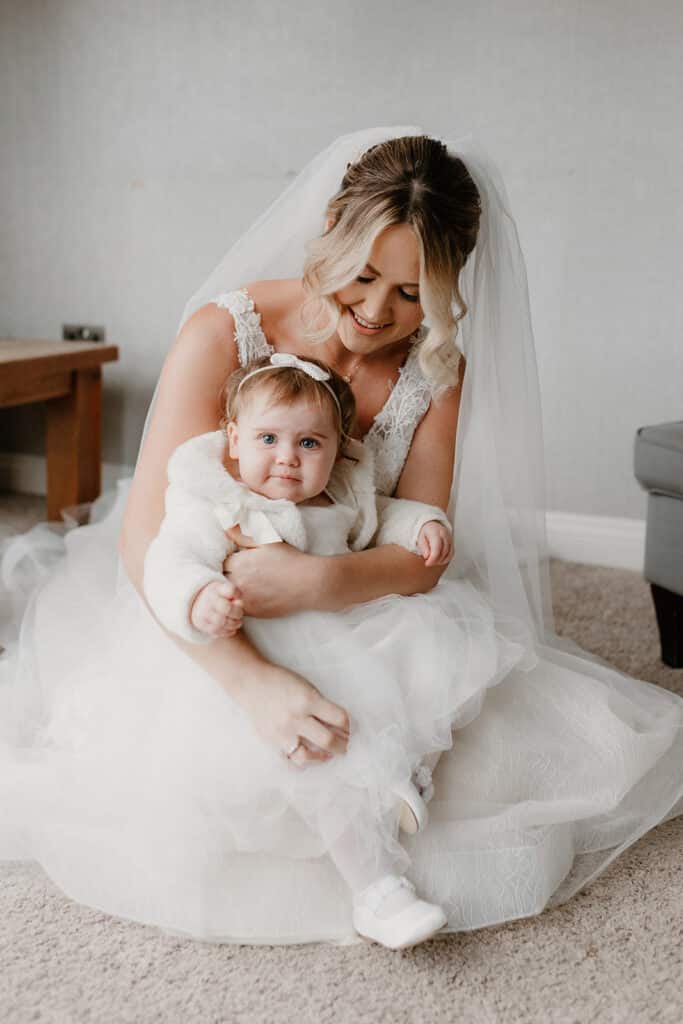
Surgery day
It was an early start for us, we were on the ward by 7:30am. Ava loved playing with all the toys and babbling to the nurses and anyone who stopped to chat. The anaesthetists gave her some medication to help her feel calm and then we walked her over to theatre for 10am.
I held her close as she drifted off to sleep. We both gave her the biggest kiss before leaving her in the capable hands of the surgical team.
We gave her the biggest kiss.
Heading in the right direction
The surgery was a success. Ava was in theatre for around three and a half hours while the surgeon removed her eye and the cancer inside it. She was fitted with a 22mm implant and given plenty of pain relief to keep her comfortable. That first day and night were all about regular medication and lots of sleep.
We knew there was still a long road ahead, especially waiting for the biopsy to confirm all the cancer had been removed, but we felt confident we were heading in the right direction.
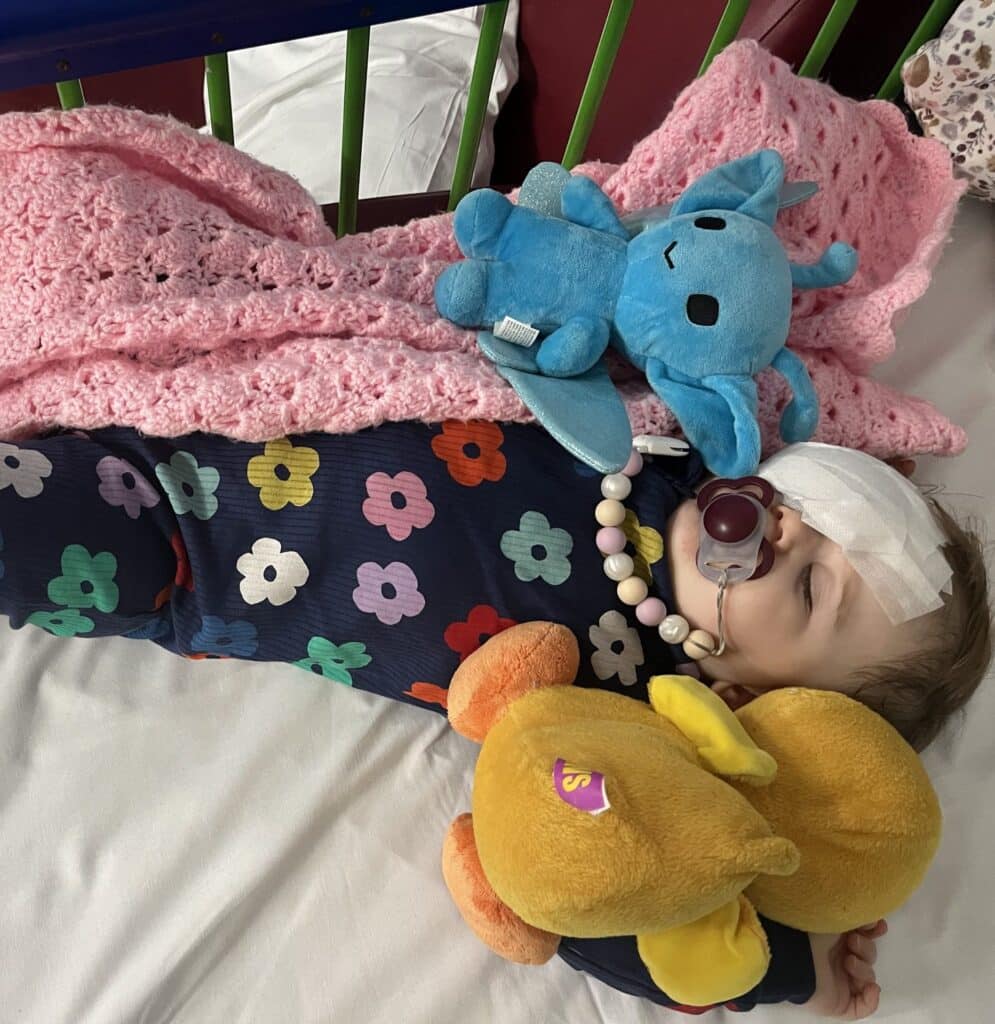
The best possible news
Ava spent most of the morning feeling sad and refusing to walk. But that afternoon, she discovered the playroom and started showing glimpses of her usual cheeky self.
A community worker brought a lovely surprise for Ava – Pip the Penguin. He’s no ordinary teddy; he’s extra special because he has a removable eye, just like Ava!
We also received the best possible news: Ava does not have the genetic form of retinoblastoma, meaning the cancer is unlikely to return.
Ava does not have the genetic form of retinoblastoma, meaning the cancer is unlikely to return.
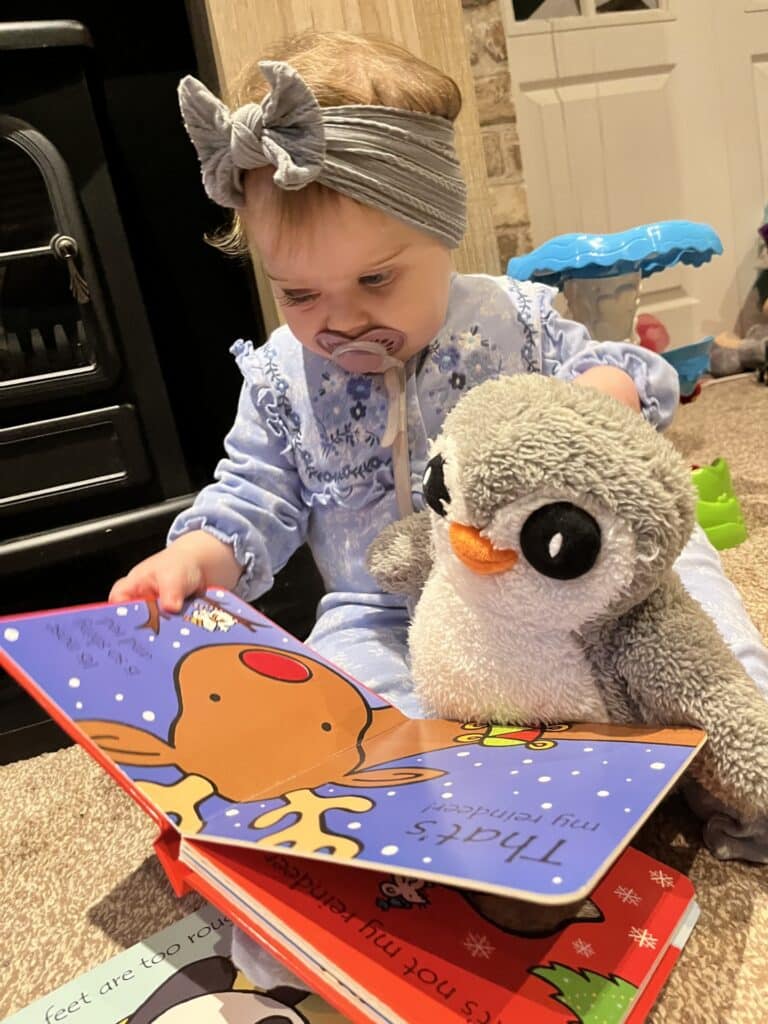
A long road to recovery
Since Ava’s diagnosis, she has undergone six surgeries, attended more than 64 hospital appointments across five hospitals, had 13 anaesthetics, one MRI, and received seven new prosthetic eyes with three readjustments. She has also needed two grafts to cover the exposed implant, ongoing play therapy sessions, countless antibiotics and steroids, and regular lubricants for her eye. Ava is also coping with post-traumatic stress following her operations, which has affected her sleep.
Despite everything, Ava is doing so well. Her unbreakable spirit shines through as she adjusts to life with one eye. I am so proud of her resilience and strength.
Victoria, Ava’s mum – November 2025.
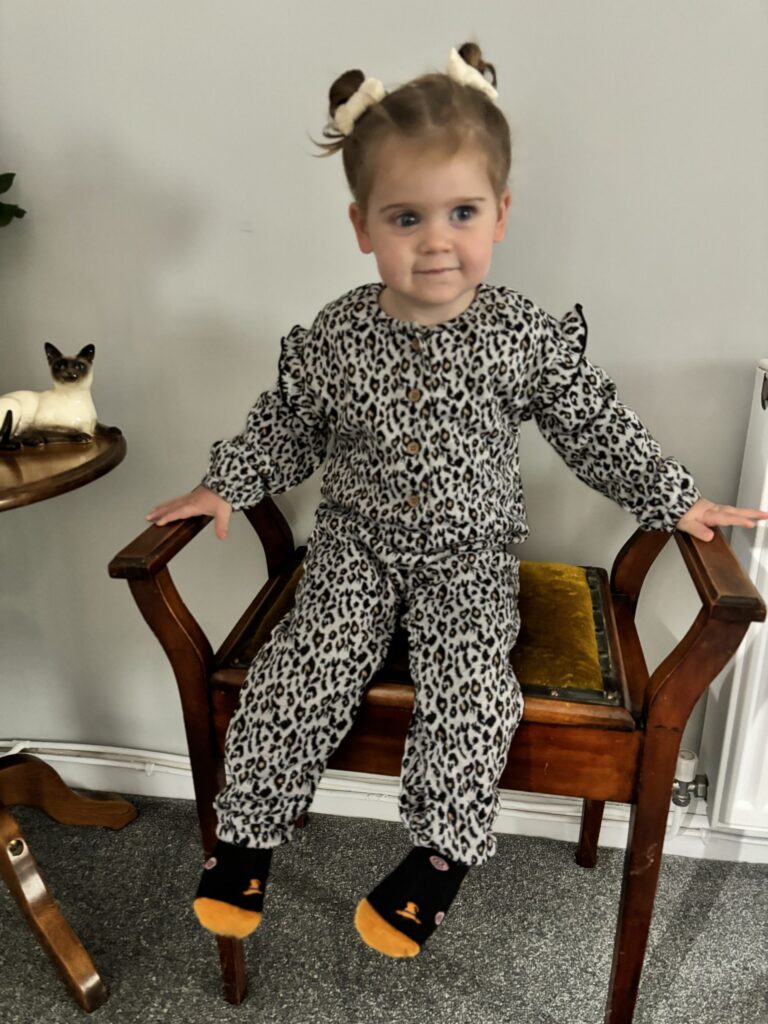
How you can help
If you’ve been touched by Ava’s journey, help us invest in the high quality research that really matters which would otherwise go unfunded.
This helps to support children with cancer so they can be with their families for longer.
Have you or a family member been affected by childhood cancer?
Many of our supporters have been affected by childhood cancer – either through family, friends or their own personal experience. These patient stories can help inspire others to get involved with us, or can support our media work.
If you have a story that you would like to tell,
Other stories
We have lots of information to help you learn more about childhood cancer. From specific cancer types, to treatments and causes.

